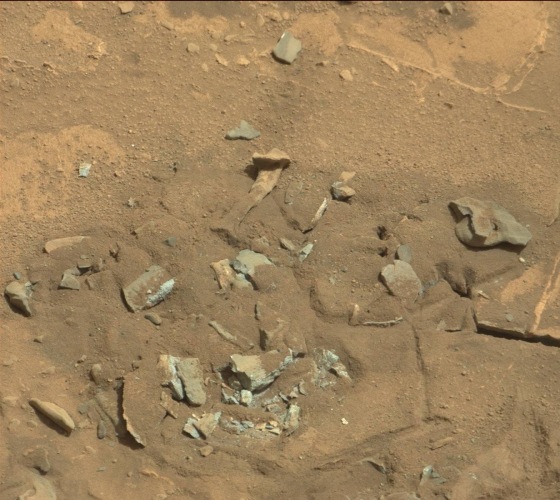A photo from NASA's Curiosity rover on Mars set the Internet abuzz last week with claims that the robot had found a "thigh bone" on the Red Planet. But not so fast. That so-called bone? Just a weathered Martian rock, NASA says.
The bone claim first appeared on a UFO blog and was quickly picked up by media outlets — so much so that NASA released Curiosity's "thigh bone" Mars rock photo with an explanation on Thursday.
In the photo description, NASA officials wrote that while "this Mars rock may look like a femur thigh bone," it is not the fossilized remains of a mysterious Martian. "Mission science team members think its shape is likely sculpted by erosion, either wind or water."
The Curiosity rover has found evidence that Mars was once a habitable place in the ancient past, but there is no evidence that creatures large enough to leave a bone behind ever existed on the planet.
"If life ever existed on Mars, scientists expect that it would be small simple life forms called microbes," NASA officials wrote in the photo description. "Mars likely never had enough oxygen in its atmosphere and elsewhere to support more complex organisms. Thus, large fossils are not likely."
There is a long tradition of seeing shapes in Mars rocks that don't reflect reality — ranging from Martian canals to the "Face on Mars" to the "Mars Rat." The phenomenon in which the human brain perceives faces, animals or other shapes that aren't really there is known as pareidolia.
— Tariq Malik, Space.com
This is a condensed version of a report from Space.com. Read the full report. Email Tariq Malik at tmalik@space.com or follow him on Twitter and Google+. Follow Space.com on Twitter, Facebook and Google+.
